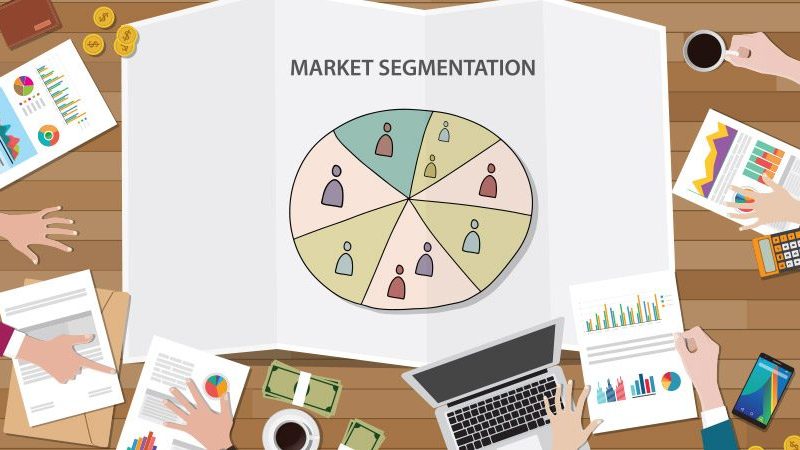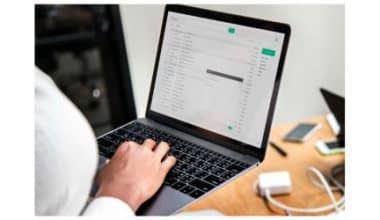This is a detailed guide into the world of audience segmentation. It may sound a little out of the blues for a newbie and a little confusing even for a seasoned entrepreneur. However, if you stick long enough to this post, you’d be armed with all the information you need to scale your businesses to the next level using this marketing strategy. In other words, we will walk you through every detail of audience segmentation with real-life examples plus the tools that come in handy in the entire process.
What is Audience Segmentation with Examples?
Audience segmentation is a marketing approach that identifies subgroups within the target audience in order to give more personalized messaging for stronger relationships. Subgroups can be formed based on demographics such as geographic location, gender identity, age, ethnicity, income, or level of formal education. Subgroups can also be formed based on previous behavior, such as purchases. When you have information about your audience’s personality types, values, attitudes, and beliefs, psychographics comes into play. For example, this means creating various categories for people depending on whether they are family-oriented versus individualistic, leaders against followers, or adventure seekers versus homebodies.
To save time, many first-time marketers develop consistent messaging and disseminate it widely. Audience segmentation, on the other hand, takes a more sophisticated approach: it helps you divide contacts into smaller groups so you can give them what they really want.
Why is Audience Segmentation Important?
In his book, “This Is Marketing,” Seth Godin, a prolific author and marketing guru, highlights segmentation as part of his 5-step marketing process. “Segmentation” is a component of step 2, “focus.”
“We’re concerned about disappointing, missing, insulting, or otherwise leaving behind someone who could become a customer,” he said in a recent interview with Inc. To avoid this, we attempt to create content that will appeal to everyone.
Unfortunately, this can frequently result in content that is flat, generic, and “mediocre,” as Godin puts it. We end up pleasing no one when we try to please everyone.
Simply put, audience segmentation prevents mediocrity by making your marketing efforts more personalized (or “focused”). It allows you to:
- Define your target audiences.
- Make your message unique to them.
- Meet a specific need to increase conversion rates
- Create a relationship with your customers and gain their loyalty.
- Bring in leads to shorten your sales cycle.
When a customer feels as if a message was created particularly for them, they are more likely to listen to what you have to say. Personalization of this nature is made feasible by segmentation.
So where do you begin? Most marketing initiatives begin with the establishment of a buyer persona, or a fictitious personality designed to represent your ideal consumer. This persona can include where the individual works, whether they are single, and what their hobbies are.
Personas help you engage with your consumers on their level, especially when it comes to understanding their pain spots and how you can assist alleviate them. Once you’ve created those personas, you may categorize them.
Types of Audience Segmentation With Examples
There is so much to learn about each consumer in your audience. To make sense of it all, consider how each feature fits into the wider picture and how it might help you communicate more effectively.
A ton of businesses employ a straightforward framework comprised of three types of audience segmentation techniques:
- Demographics — concentrates on who your clients are.
- Psychographics — examines how your customers think.
- Behaviors —concerned with how your customers make their purchasing decisions.
If your data set is large enough, any attribute in these three categories can be utilized to slice and dice the entire audience. However, the appropriate one for the job is determined by your objectives and your target audience.
Let’s look at each of the three types.
#1. Demographic Segmentation — Who Are Your Customers?
Demographics are the most commonly used criteria for audience segmentation. They are easily recorded using multiple-choice survey questions and (typically) divided into discrete categories.
Here are some common examples of demographic audience segmentation:
- Gender Age (and generation)
- Race and ethnicity
- Relationship status Household income (HHI)
- Employment status and occupation
- Level of education
- The presence of children, the language used, and the geographical location
- County type (rural, urban, suburban)
Some scholars classify geographical segmentation as a fourth category, but we believe, to a large extent, belongs under demographics.
Psychographic Segmentation — How Do Your Customers Think?
Psychographic segmentation (also known as attitudinal segmentation) allows you to get into your consumers’ brains. Not only can psychographics influence a customer’s purchasing decisions, but they also tell that person’s story and serve as the foundation for effective communications.
Traditionally, psychographics was classified as activities, interests, and opinions (earning the name AIOs).
However, Adele Revella’s method at the Buyer Persona Institute, in which she divides psychographics into five major categories, classifies it better.
Read Also: MOBILE MARKETING: Definition, Example & All You Need To Know
- Personalities: “Describes the collection of features that someone regularly exhibits over time, as frequently analyzed through a 5-Factor Model,” also known as the OCEAN model.
- Lifestyles: Defined as “the collection of someone’s day-to-day activities: their associations, where they live, how they spend their time, and so on.”
- Interests: “Include hobbies, activities, media consumption patterns, and what consumes someone’s time.” (I would also include influences here.)
- Opinions, Attitudes, and Beliefs: These are “separate psychographic categories, but I’ve placed them together because they tend to be strongly associated.”
- Values: “Describe their sense of good and wrong.”
All five categories influence how your clients see your product, but not every insight will be applicable. If you sell paper towels, knowing they cook frequently and care about sustainability is far more useful than knowing they have a gambling problem.
Psychographics are my favorite of the three segmentation methods since they paint your audience in full color. And the process is becoming faster by the year, owing to audience intelligence technologies that allow you to understand what your audience is doing online.
Behavioral Segmentation — How Do Your Customers Decide to Buy?
The most useful type is behavioral segmentation. It is intimately related to how your customers think about (and interact with) your product and marketing.
Some of these signals can be difficult to precisely record, but the rise of analytics tools and machine learning has made it much easier.
Here are some possible behavioral segmentation characteristics for your customers:
Read Also: DIGITAL MARKETING STRATEGIES: Best Easy framework, & Options with examples (Detailed guide)
- Point of Discovery: How did they learn about your organization and product? Prioritize one channel or source if it sends you an unusually large quantity of customers.
- Purchasing Behavior: What actions led up to the purchase? It’s critical to evaluate the various buyer journeys your customers take before making a purchase decision.
- Purchase Frequency: How frequently do they buy from you? Loyal consumers are more valuable, but the amount of each purchase also matters. When do people buy from you? This is vital to understand so that you can approach them at the right moment, and it also helps you to account for seasonality and unique occasions such as Black Friday.
- Level of Engagement: How engaged are your customers with your communications? This is more readily segmented with new digital communication technologies and CRMs.
- Product Usage: How frequently does your customer use your product or service? This is considerably easier to determine if you sell applications or a SaaS product with built-in tracking, but survey research may also be used to determine this for physical products.
- Product Benefits: If your product has more than one advantage, which one is more likely to entice them to buy? This is one of the most essential behavioral segmentations you can perform, and it should have an impact on positioning and message.
- Stage of Awareness: Are they aware of your product and how it solves their problems? Eugene Schwartz identified five levels of awareness in his book, “Breakthrough Advertising:” Unaware, Problem Aware, Solution Aware, Product Aware, and Most Aware.
Read Also: Buyer’s Journey: Meaning, Stages & How to Implement in Sales Process
All of these groups are crucial in establishing how to segment and communicate with your clients, but I would prioritize product benefits and stages of awareness. With just those two aspects, you can grasp your clients’ “jobs to be done” and guide them through the consumer decision experience.
Other Types and Examples of Audience Segmentation
Some of these audience segmentation examples may be familiar to you. Demographic/geographic, psychographic, and behavioral audience segments are the most common, which we have already listed above. Below are three other audience segmentation examples in this list to help you dig further into consumer differentiators.
Customer Stage Segmentation
Customer stage segmentation divides audiences into groups based on their position in the sales funnel. It divides clients into categories based on whether they have become customers and how close they are to making a purchase. This is one of the audience segmentation examples that can be created employing CRM and business data. It divides clients into different stages, such as:
- Awareness
- Decision
- Purchase
- Post-Purchase
- Evangelist for a brand
You can basically generate more potent marketing promos and call-to-actions by segmenting your audience using the customer stage technique. Customers require different things at different phases of their lives. For example, someone in the choice stage requires more information, whereas someone in the post-purchase stage may be open to upsell opportunities.
Technology Segmentation
Although technology segmentation is not one of the most common audience segmentation examples/techniques, it can be useful for certain brands and industries. It categorizes audiences based on the technology they utilize. This data can be used to create a positive customer experience by segmenting audiences based on the following criteria:
- Use of a Mobile Device or a Desktop Computer
- Use of an App or a Browser
- Logged In or Guest Checkout
- Type of Software Use
- Most Used Social Platforms
Knowing what kind of technology your target audience employs can help you influence the type of digital content you create, how you create it, and where you put it on display. Furthermore, knowing how people interact with your digital material can help you better understand the user experience and create online experiences that are tailored to the audience’s preferred platforms.
Benefit Segmentation
Data analysis is required for benefit segmentation. This information can also be obtained through speaking with customers or conducting surveys. Your audience is segmented based on the benefits they want from your brand, product, or service. Massages, for example, may be available at a spa. Some clients want massage treatment to relieve physical pain, while others seek massages to unwind.
You may design more successful marketing messages and campaigns by categorizing your audience depending on the precise benefits they desire. Rather than providing broad examples of benefits and solutions, you might address directly to a specific audience need.
Choosing a Type of Segmentation
Behavioral and psychographic characteristics are more useful in understanding the “how” and “why” of your audience’s purchases. That aim is significantly more valuable than demographic data.
That doesn’t imply demographics aren’t useful. Demographics can assist you to identify who will (and won’t) buy your goods, especially when they serve as indicators of psychographic and behavioral features.
For example, if you’re selling high-end furniture, you might solely target high-earners. However, they are purchasing the furnishings because they have a passion for design or want to display their wealth, not simply because they have the money.
By understanding what each type of segmentation may offer, you’ll be better able to choose between them throughout the audience segmentation process.
Creating an Audience Segmentation Strategy
So, while we already know that not enough marketers undertake appropriate audience research, we’ve discovered that those who do are more than a hundred percent more likely to achieve their marketing goals.
Many marketers are simply too swamped to begin. And I understand that the procedure may appear out of reach, especially if your department is small (or a team of one). However, the sooner you begin, the more time you have for trial and error.
The study necessary for segmentation does not have to be extensive or time-consuming. Keeping things simple and asking the proper questions is often enough to make a difference.
Here are five actionable steps to set the ball rolling:
#1. Gather and Analyze Existing Data
Begin by auditing all accessible data and findings before conducting any original research.
An internal evaluation might help you identify and learn more about your top customers. Then, look for comparable characters to learn more about why they buy.
Here are some more common internal sources:
- Existing consumer data and research
- Data from transactions
- Revenue figures
- Notes from sales calls
- Customer feedback and reviews
- CRM engagement data (and product, if applicable)
- Website analytics
Also, keep an eye on the money; revenue and transaction statistics will be critical in determining the most profitable portions of your audience. Data can often reveal opportunities that you were previously unaware of, so leave your preconceived beliefs at the door.
Read Also: MARKET RESEARCH: definition, Types, & Guide To Different Research Method
Next, depending on the source, an external look can provide either a bird’s eye view of the market or a glimpse inside the motivations and grievances of a specific person.
Here are some additional resources to consider:
- Message boards and forums
- Syndicated research and industry reports
- Datasets made available to the public
- Social media
- Amazon reviews for comparable products
Once you’ve gathered data from the appropriate sources, organize it in a centralized area and see what insights you can gain. Look for facts that surprise you, and pay special attention to patterns and trends that could serve as the foundation for segmentation.
Then it’s time to start filling in the blanks with your own research.
#2. Conduct New Audience Research
Secondary research is useful but restricted. Existing internal sources may not supply the specific answers you require, and external sources are not tailored to your specific audience.
That’s why it’s generally used as a springboard for primary research, which solves both challenges while also providing a deeper, richer understanding of your audience.
There are two basic methods of audience research for segmentation:
- Quantitative Research can be measured and quantified. Because this form of research benefits from categorization, it lends itself more easily to segmentation.
- Qualitative Research is descriptive and aids in answering “why” questions. While it may appear to be less essential for segmentation, it is critical for understanding your consumers’ challenges and motives.
It would be difficult to cover all of the numerous approaches here, so I’ll concentrate on the most important technique in each area.
Survey Research (Quantitative)
The goal is to categorize your audience in a variety of ways and to identify the size of each category.
- Best for: Demographic and behavioral segmentation
- Pros: quick results, scales well, offers separate categorisation, more representative, results may be readily split
- Cons: Survey questions and answers can be interpreted differently, survey fatigue can lead to drop-offs or missed questions, and there is no way to expound or clarify.
Customer Interviews (Qualitative)
The goal is to gather in-depth information about the buyer’s challenges, motivations, and viewpoints.
- Best for: Psychographic and behavioral segmentation
- Pros: Answers the “why,” enables for clarifying follow-up inquiries, visibility of nonverbal clues, more concentrated attention, elaboration can lead to unexpected results
- Cons: Expensive and time-consuming, restricted sample size, can be scary, and it might be difficult to get people on the phone.
Both methods of primary research have advantages and disadvantages, but when used together, they create a more comprehensive picture of your target population. The more extensive that view, the easier it will be to establish your segments.
#3. Identify the Segments
In step two, your research analysis can range from simple to extremely complex. Where you fall on that spectrum is determined by your survey design, software, level of understanding, and the amount of time you’re ready to invest. More information can be found in the other sites listed below.
For the time being, here’s what I’d call a minimal viable analysis:
- Take a First Pass: Examine the responses to each question and look for anything that piques your interest or surprises you. Make a note of any insights you discover.
- Segment the results through cross-tabulation: Using those results and everything else you know about your audience, begin segmenting the dataset using cross-tabulation. You should concentrate on the segments that are most likely to yield important insights. A B2B company, for example, might segment the results by occupation or level of seniority, whereas a bicycle company might be interested in segmenting by how frequently they cycle. Your first cross-tab report may not provide all of the answers, so persevere and experiment with segmenting the responses in a variety of ways.
- Draw your conclusions: At this point, you should begin sifting through your findings and understanding the broader implications of the data. This is an art, not a science, but your research and analysis should tell a story about the best segments for your business.
- Make a recording of your segments: Define and document the segments you’ve chosen, including all relevant details.
If the segments feel right, proceed to step four. It can be tempting to keep trying new segments and cross-tabs, but at some point, you have to just stress-test your best segmentation and see if it holds up
#4. Go Over the Segments Again
Once you’ve defined your segments, you should go over them to ensure you’re on the right track.
First, ensure that all of the segments are distinct. People in each segment should be similar in relevant ways. In addition, there should be little overlap in those same attributes between segments.
Then, run each one through the following:
- Measurable – This means you can determine its size and composition, as well as make educated predictions about the revenue and profit it can generate.
- Substantial – This refers to profitability rather than size. A segment may consist of only one customer, but if the profit is significant, it may be viable.
- Differentiable – Different segments will react differently to the same marketing mix. If they don’t, they aren’t different segments.
- Actionable – You should be able to provide the value that this customer seeks. For example, a low-cost airline has little to offer the intercontinental business traveler.
- Accessible – You should be able to reach the segment at the appropriate time, place, and context.
It may be tempting to skip this step, but it is necessary for an effective audience segmentation strategy. You don’t want to wait until you’re reporting on your brand new campaign to discover that a segment is unviable.
#5. Develop Audience Profiles
After you’ve identified your segments, you’ll need to create audience profiles, or personas, to tell the story of each segment. This is where your audience segmentation comes into play.
Jennifer Havice writes in her book Finding the Right Message:
“The problem with most personas is that they were created with either irrelevant data or no data at all.” Many personas are built around a profile of what the company wants its ideal buyer to be rather than representing the buyer’s expectations, needs, wants, and concerns.”
To avoid these pitfalls, you must be ruthless in determining whether each data-driven insight is relevant to the segment in question — and the overall buyer journey. It will vary depending on the product and industry: If you’re selling B2B software, you should include the buyer’s job title and level of seniority; not so much if you’re selling toothpaste.
Read Also: Types of Market Segmentation (+ Benefits, Tips & Examples)
Despite these differences, strong personas have many things in common:
- They are specific. Segments are generic, whereas personas tell the story of a specific customer profile.
- They are only human. Give the persona a name, a picture, and a brief bio that includes some backstory. This makes them feel more real — and memorable — so that the entire organization can easily adopt them.
- They highlight objectives as well as roadblocks. Customers purchase your product to solve a problem or to become a better version of themselves. The persona must highlight the nuances of their motivations as well as the obstacles that are holding them back.
- They set the scene. Understanding their personality, interests, and sources of information and influence can help you communicate effectively.
- They are objective. Personas reflect your insights and research, even if they conflict with your current positioning and materials.
To get the most out of audience segmentation, get your findings off the page and into the field so you can see what works and what doesn’t. Then apply it to the following round of research and the one after that.
A Better Way to Segment Your Audience
It is possible to take a more rudimentary approach to audience segmentation, but the tools you have access to will have a significant impact on your ability to collect and process data.
Here are some examples of popular audience segmentation tools:
- Google Analytics: Google Analytics is a web-based tool that allows you to research and segment your audience based on basic parameters such as demographics, on-site behavior, and how they found your website.
- Survey Tools: You can use survey tools to conduct audience segmentation research and analyze the results.
- All-In-One CRM Tools: The most powerful customer relationship management (CRM) tools can track how customers and prospects interact with your marketing in a variety of ways— audience segmentation in plain terms. These interactions can be recorded and used to segment your communications.
- Platforms for Audience Intelligence: Research platforms can provide a 360-degree view of your audience (or any audience) in minutes.
Other Audience Segmentation Tools
Here are the five examples of the finest audience segmentation tools for identifying clients who are most in need of your services—including Google Analytics.
Kissmetrics
Neil Patel, the founder of Kissmetrics, launched the company in 2008. It ranks at the top of the list, but unlike Google Analytics, it tracks people’s actions rather than their page view behaviors. Kissmetric is an audience segmentation tool for marketers that know what they want to achieve with their campaigns. Conversion funnels, A/B testing, and integration with popular eCommerce and email platforms are all available through Kissmetric. It’s ideal for testing communication. Kissmetrics is designed for eCommerce-focused online marketers. Kissmetrics offers a 14-day free trial and a monthly subscription that starts at $400.
Segment
This is useful for companies who want to establish a uniform data standard across their entire organization. You may then use the same data to power all of your apps. You may also query your data in SQL with this client segmentation tool for the most convenient experience. Personas, a new product built on the Segment platform, is also available from Segment. You can make sense of your client data and use it to provide personalized experiences throughout the customer journey by using Personas. Kissmetrics’ pricing is comparable to Segment’s.
Piwik PRO
Piwik PRO offers an easy-to-use UI that even a novice can use. This audience segmentation tool keeps track of website visitors and generates reports that describe who they are and how they act. The results generated by this tool show that you have a better understanding of your target audience. They’re especially useful for a corporation that has to look at and compare several websites fast. If you’re having trouble with Google Analytics reporting, Piwik PRO is a fantastic audience segmentation tool to look at.
Optimove
Optimove is an Israeli-based Relationship Marketing Hub that prioritizes science. Hundreds of customer-centric businesses utilize it to scale customer interaction and create meaningful growth. Optimove blends the art of marketing with the science of data to generate actionable intelligence in real time, allowing marketers to create highly effective tailored CRM campaigns across various channels. Audience segmentation has progressed to the point of “emotionally intelligent” communication, which aids marketers in increasing client spend, engagement, retention, and lifetime value.
Adobe Analytics
Adobe Analytics provides a complete perspective of your organization, allowing you to really comprehend your customers’ online journey. It was named the leader in customer analytics by Forrester last year. Adobe Analytics Cloud allows you to track the performance of your digital marketing campaigns, recognize and create different types of data segments for remarketing, provide a personalized shopping experience to your site visitors, and work with bare-minimum data latency, especially during peak traffic periods. Adobe Analytics Cloud also interfaces to a variety of native and third-party technologies, making it simple to import data from other sources. Furthermore, it is a business tool with annual license prices ranging from $30,000 to $300,000.
No company should engage in marketing without first segmenting its target market. There’s no reason not to, with such a wide selection of audience segmentation options to match the demands of any organization.
What Are the 4 Types of Segmentation?
The four primary types of market segmentation are demographic, psychographic, behavioral, and geographic segmentation, although there are many other tactics you can apply, including several variations on the four main types.
What Is Audience Segmentation in Digital Marketing?
In digital marketing, audience segmentation is the process of dividing your audience into several groups based on numerous characteristics such as demographics and media use. Audience segmentation is an important component of a focused marketing approach for digital marketers.
What Is Audience Segmentation Why Is It Important?
Audience segmentation, or market segmentation, is a critical component in developing an efficient sales or marketing plan. Ultimately, it comes down to finding better customers. It divides your target audience into groups with comparable interests or purchasing habits.






